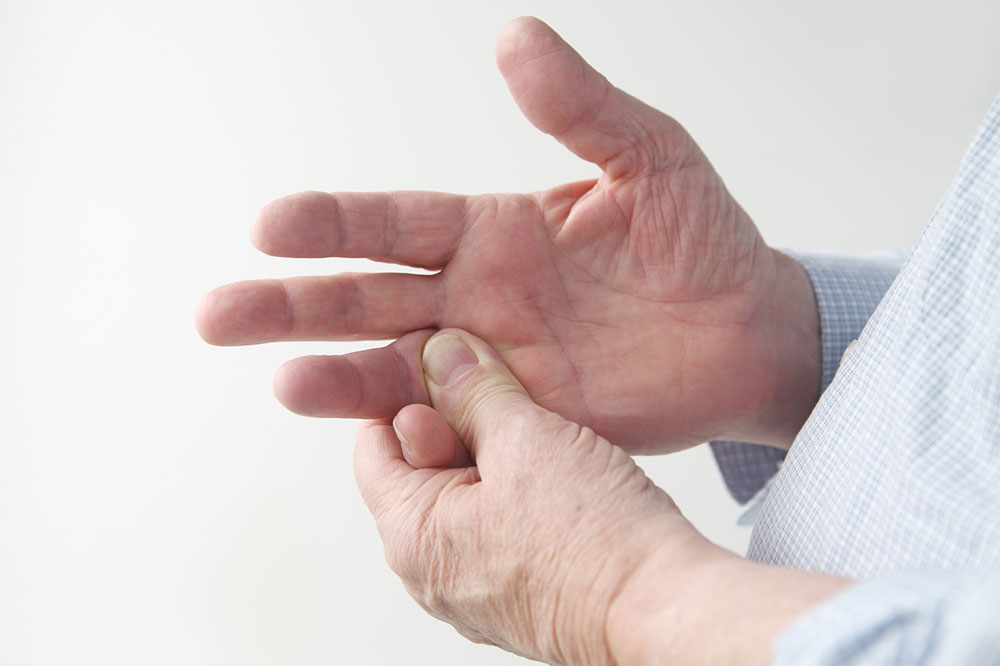Comprehensive Guide to the Six Most Common Joint Disorders and Their Management
This detailed article explores six common joint disorders, including rheumatoid arthritis, osteoarthritis, juvenile idiopathic arthritis, spondylitis, gout, and bursitis. It offers comprehensive insights into their symptoms, causes, and management strategies, emphasizing the importance of early diagnosis and tailored treatment for preserving joint health. Ideal for individuals seeking to understand joint conditions and healthcare providers aiming for effective intervention, this guide highlights the necessity of proactive health measures and professional consultation to prevent long-term damage and improve quality of life.

Comprehensive Guide to the Six Most Common Joint Disorders and Their Management
Joint health is vital for maintaining mobility and overall quality of life. However, many individuals encounter joint-related ailments due to factors such as injuries, age-related degeneration, autoimmune responses, or nutritional deficiencies. Understanding these conditions is crucial for early diagnosis, effective management, and improved outcomes. While some joint issues are transient and respond well to conservative treatments like physiotherapy and medications, others are chronic, debilitating, and may necessitate surgical interventions, including joint replacements. Among the various joint disorders, arthritis stands out as a predominant cause of disability worldwide. It encompasses a broad spectrum of joint diseases, each with distinct causes, symptoms, and treatment approaches. This article provides a detailed overview of six of the most common joint conditions, their characteristics, and management strategies.
Proper knowledge of these conditions is essential for both individuals and healthcare providers seeking to prevent progression, alleviate pain, and restore joint function. Early diagnosis and tailored treatment plans can significantly enhance patients' quality of life and reduce the risk of complications. Here is an in-depth look at each of these common joint disorders:
Rheumatoid Arthritis
Rheumatoid arthritis (RA) is a chronic autoimmune disease characterized by the immune system mistakenly attacking the synovial membrane lining the joints. This abnormal immune response leads to persistent inflammation, swelling, warmth, and redness of affected joints. Over time, RA can cause irreversible damage to cartilage and bone, resulting in joint deformities and loss of function. It can affect individuals of any age, from young adults to the elderly, although it predominantly strikes between ages 30 and 50. RA often involves multiple joints symmetrically—commonly the wrists, fingers, knees, and ankles—and can also impact other organs, leading to systemic symptoms like fatigue, fever, and malaise. Effective management of RA includes immunosuppressive medications such as disease-modifying antirheumatic drugs (DMARDs), biological agents, and targeted therapies, combined with physical therapy and lifestyle modifications to reduce disease activity and prevent joint destruction.
Osteoarthritis
Osteoarthritis (OA) is the most prevalent form of arthritis, primarily affecting older adults. It results from the gradual wearing down of cartilage—the smooth, cushioned tissue that covers the ends of bones in joints. As cartilage deteriorates, bones are exposed to friction, leading to pain, swelling, stiffness, and decreased mobility. Commonly affected joints include the hips, knees, hands, and spinal joints. OA can develop due to aging, repetitive joint use, injury, obesity, or genetic predisposition. Symptoms tend to worsen gradually and may lead to limitations in daily activities. While there’s no cure for osteoarthritis, management focuses on pain relief and preserving joint function through weight management, physical therapy, pain relievers, corticosteroid injections, and in severe cases, joint replacement surgery.
Juvenile Idiopathic Arthritis
Juvenile idiopathic arthritis (JIA) affects children under the age of 16 and is characterized by persistent joint inflammation lasting at least six weeks. Unlike adult forms of arthritis, JIA involves immune system dysregulation that targets multiple joints, causing swelling, pain, and stiffness. It can also affect internal organs, muscles, and growth development in children, potentially leading to long-term growth disturbances or deformities if left untreated. Symptoms may fluctuate between periods of flare-ups and remission. Early intervention with anti-inflammatory medications, physical therapy, and sometimes biologics can help control symptoms and prevent joint damage. Close monitoring by pediatric rheumatologists ensures appropriate management tailored to the child's needs.
Spondylitis
Also known as spondyloarthritis, spondylitis primarily involves inflammation of the spinal joints. The most common form, axial spondylitis, can cause spinal fusion over time, leading to severe stiffness and deformity. Other variants include psoriatic spondylitis, which affects the pelvis and spine and may be associated with skin psoriasis. Symptoms often include chronic back pain, stiffness, and reduced spinal mobility, usually worse in the morning or after periods of inactivity. Spondylitis can also involve other joints and entheses—the sites where tendons and ligaments attach to bone. Treatment options encompass nonsteroidal anti-inflammatory drugs (NSAIDs), biologic therapies such as TNF inhibitors, physical therapy, and sometimes surgical procedures for severe deformities or joint damage.
Gout
Gout is a metabolic disorder characterized by the accumulation of uric acid crystals within joints, leading to intense inflammatory responses. It most commonly affects the big toe but can involve other joints such as the ankle, knee, wrist, or fingers. Gout attacks are sudden, excruciatingly painful, accompanied by redness and swelling. Underlying risk factors include high purine diet, obesity, alcohol consumption, certain medications, and genetic predisposition. Chronic hyperuricemia can lead to tophi—deposits of uric acid crystals—and joint destruction if not properly managed. Treatment strategies focus on acute flare relief through NSAIDs, corticosteroids, and controlling uric acid levels with medications like allopurinol or febuxostat. Lifestyle changes, such as dietary modifications and weight management, also play a significant role in managing gout.
Bursitis
Bursitis involves inflammation of bursae—small, fluid-filled sacs that reduce friction between tissues around joints. Commonly affected areas include the shoulder, elbow, and hip. Causes may include repetitive motion, injury, infection, or prolonged pressure on the joint. Symptoms include pain, swelling, limited movement, and tenderness around the affected joint. Bursitis tends to resolve with rest, ice application, anti-inflammatory medications, and activity modifications. In cases where infection is present, antibiotics and drainage may be necessary. Chronic bursitis may require corticosteroid injections or surgical removal of the inflamed bursa to restore function and reduce discomfort.
In summary, understanding these six common joint disorders is crucial for early detection and effective management. If you experience symptoms such as joint pain, swelling, stiffness, or reduced mobility, consulting an orthopedic or rheumatology specialist promptly is essential. Timely intervention with appropriate therapies can prevent permanent damage, alleviate pain, and enhance your overall well-being. Protecting joint health through regular exercise, maintaining a healthy weight, and avoiding joint overuse can significantly reduce the risk of developing these conditions. Remember, a proactive approach and early treatment are the keys to maintaining healthy, pain-free joints for years to come.





